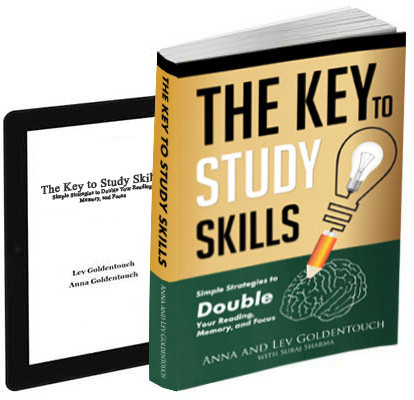Raise a Polymath by Encouraging Play and Curiosity Early
Raising a child who can dream wildly yet reason clearly is not just a parenting goal—it’s a long-term investment in their future. In today’s world, children are often pushed to excel in tests, memorize facts, and stay within the lines. But the true magic happens when creativity and logic grow side by side—when a child can both imagine the impossible and find a way to make it real.
This balance is not the result of talent or luck. It’s the product of intentional learning environments, well-designed challenges, and the right kind of mental training.
So, how do you help your child grow into someone who can both think big and think smart? Someone who can generate ideas and test them, express feelings and analyze data, build dreams, and solve problems? This article shows you how, and how the book Anyone Can Train to Become a Polymath can guide your journey.
Myth of Choosing Between Logic and Creativity
For decades, society taught us that logic and creativity are opposites. You’re either “left-brained” and analytical or “right-brained” and imaginative. But neuroscience and cognitive research say otherwise. In reality, the brain works best when it integrates both modes of thinking.
Children don’t naturally choose one side. They draw dragons and count their legs. They ask deep questions and invent wild stories. But over time, educational systems and rigid expectations push them toward conformity, either into the role of the obedient thinker or the artistic dreamer.
To raise a polymathic child—one capable of cross-disciplinary brilliance—you must break that false divide. You must cultivate both sides of their cognitive toolkit. That means encouraging precision and playfulness, as well as reasoning and exploration.
Why This Balance Is Critical for Future Success?
Today’s children will grow into a world shaped by rapid innovation, automation, and complexity. To thrive in such a world, they must become agile learners—individuals who can:
- Adapt to new challenges
- Learn skills across fields
- Communicate ideas clearly
- Build original solutions
Logical thinking enables them to break down problems, identify inconsistencies, and structure arguments effectively. Creative thinking helps them brainstorm possibilities, connect distant ideas, and stay curious. Both are needed—deeply and equally.
It is no longer enough to simply be smart. What children need is smart imagination—the power to envision and engineer new realities. That’s what Anyone Can Train to Become a Polymath teaches, and this article introduces you to that framework.
Practical Ways to Nurture Creativity and Logic Together
1. Encourage Open-Ended Questions and Challenges
Instead of giving your child a worksheet with one correct answer, pose open-ended challenges. Ask:
- “What are five ways to solve this problem?”
- “Can you build something that solves a real-world issue?”
- “What would happen if…?”
Such prompts activate creative thinking while requiring logical frameworks to support their ideas. It’s not just about being imaginative—it’s about thinking with purpose.
2. Use Storytelling as a Learning Tool
Stories aren’t just for bedtime—they’re cognitive glue. When children turn what they’ve learned into a story, they:
- Organize information logically (plot structure)
- Practice memory recall (facts and events)
- Express emotions and abstract ideas (metaphors)
One of the core methods in “Anyone Can Train to Become a Polymath” is learning through storytelling—a method that is both engaging and neurologically effective.
3. Introduce Strategic Games and Visual Tools
Games like chess, puzzles, or logic mazes sharpen the analytical mind. At the same time, building structures with LEGO, drawing imaginary maps, or designing board games develops visual thinking and creative planning.
Train your child to think in layers: visual, verbal, numerical, and spatial. The book includes techniques such as memory palaces and mind maps that stimulate multimodal learning from an early age.
4. Embrace Productive Boredom and Free Exploration
Overscheduling a child leaves no room for cognitive growth. Sometimes, the best thing you can do is leave them unstructured time, not with screens, but with blank paper, building blocks, or the backyard.
This “productive boredom” lets their inner creativity come to the surface. Add subtle logic tasks to the mix—pattern recognition, measurement games, reasoning puzzles—and you build a complete cognitive gym.
5. Frame Mistakes as Learning Moments
Logic thrives on precision, but creativity thrives on trial and error. Don’t punish mistakes—analyze them. Help your child reflect:
- “What did you expect to happen?”
- “Why do you think it didn’t work?”
- “What could you try next time?”
This reflection trains both critical thinking and emotional resilience—a dual skill that many adults struggle to develop.
Lessons from the World’s Most Innovative Thinkers
Children today can draw inspiration from those who changed the world, not through one skill but through many:
- Steve Jobs paired engineering insight with artistic design.
- Marie Curie used scientific discipline and creative experimentation to uncover new elements.
- Albert Einstein famously visualized concepts through thought experiments before doing the math.
- Ada Lovelace combined logic, language, and imagination to become the first computer programmer.
These pioneers weren’t born with special gifts. They trained their minds in both creative and logical domains, just as your child can.
What This Book Offers Parents and Educators?
Anyone Can Train to Become a Polymath is not just for adults—it includes a full section on raising polymathic children. It offers:
- Creative learning techniques for different ages
- Logical reasoning tools are made fun for young minds
- Exercises that build memory, curiosity, and problem-solving
- Advice on how to structure learning around interests, not curricula
- Real-world examples of polymath kids and how they were nurtured
This is not a standard parenting book. It’s a mind-expanding resource designed to change how children see learning, how they manage challenges, and how they grow into adults who own their intelligence.
A Future Shaped by Minds Like Theirs
We don’t need more test-takers. We need creators, visionaries, systems thinkers, and leaders who can adapt to change and solve problems from multiple angles. Children trained in both creative and logical thinking become such leaders.
If you’ve ever wondered how to nurture your child’s full mental potential—not just to help them succeed, but to help them shine—this book is your guide.
Ready to Raise a Polymath?
Imagine a child who writes stories, builds machines, solves puzzles, and dreams up new worlds—one who questions, creates, and calculates with equal joy. That child is not rare. That child could be yours—with the right tools, mindset, and guidance.
This is precisely what we explore in Anyone Can Train to Become a Polymath. The book not only provides hands-on strategies for raising a versatile thinker, but also connects you with a larger learning ecosystem. You can follow our ongoing ideas and extensions across four curated blogs:
- KeyToStudy.com – Learn memory techniques and visualization strategies that supercharge learning in children and adults alike.
- KeyToVision – Explore visual thinking, mental clarity, and learning design for creative and logical minds.
- ProlificFocus – Dive deep into attention control, productivity habits, and mental discipline, tailored for both students and parents.
- SmartOrFun – Discover fun-first learning, where games, storytelling, and exploration become powerful tools for knowledge development.
Each platform complements the lessons from the book, offering bite-sized insights, practical exercises, and answers to real questions from parents and educators. You’ll also find fresh content daily on our Facebook page, curated from all four blogs to keep your child’s development on track.
Whether you’re a parent, a mentor, or an educator, now is the time to equip your child for a life of curiosity, creativity, and clarity.
Begin their journey toward becoming a polymath, because brilliance isn’t born. It’s trained.

Get 4 Free Sample Chapters of the Key To Study Book
Get access to advanced training, and a selection of free apps to train your reading speed and visual memory

